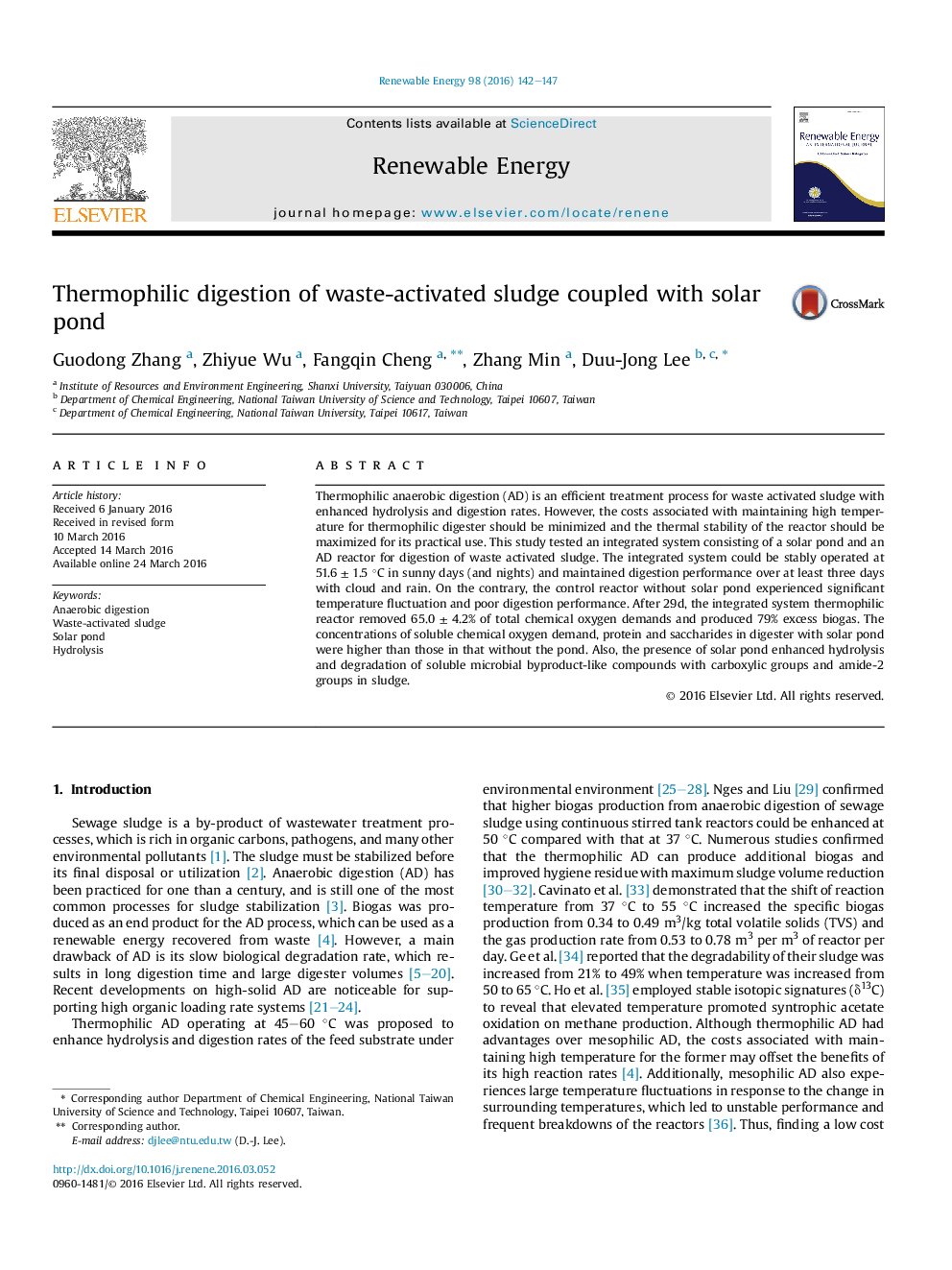| Article ID | Journal | Published Year | Pages | File Type |
|---|---|---|---|---|
| 299656 | Renewable Energy | 2016 | 6 Pages |
•Integrated thermophilic anaerobic digestion reactor and solar pond was tested.•Integrated system was stably operated at 51.6 ± 1.5 °C when digesting sludge.•Integrated system removed 65.0 ± 4.2% of total chemical oxygen demands.•Integrated system removed most soluble microbial byproduct-like compounds.•Integrated system is feasible digestion unit utilizing renewable solar energy.
Thermophilic anaerobic digestion (AD) is an efficient treatment process for waste activated sludge with enhanced hydrolysis and digestion rates. However, the costs associated with maintaining high temperature for thermophilic digester should be minimized and the thermal stability of the reactor should be maximized for its practical use. This study tested an integrated system consisting of a solar pond and an AD reactor for digestion of waste activated sludge. The integrated system could be stably operated at 51.6 ± 1.5 °C in sunny days (and nights) and maintained digestion performance over at least three days with cloud and rain. On the contrary, the control reactor without solar pond experienced significant temperature fluctuation and poor digestion performance. After 29d, the integrated system thermophilic reactor removed 65.0 ± 4.2% of total chemical oxygen demands and produced 79% excess biogas. The concentrations of soluble chemical oxygen demand, protein and saccharides in digester with solar pond were higher than those in that without the pond. Also, the presence of solar pond enhanced hydrolysis and degradation of soluble microbial byproduct-like compounds with carboxylic groups and amide-2 groups in sludge.
